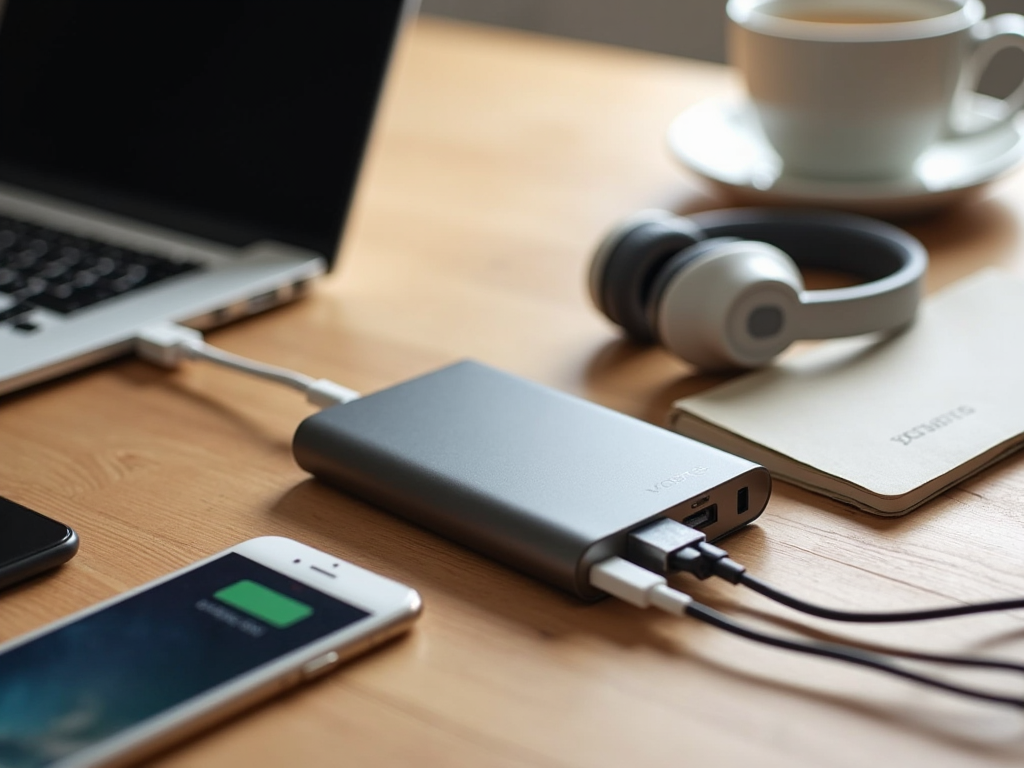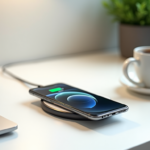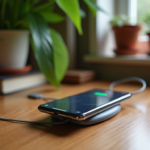Power banks have become indispensable for modern users who rely on multiple electronic devices. As we navigate our digitally-driven lives, ensuring that our gadgets don’t run out of power becomes a priority. However, not all power banks are created equal, and making an informed choice requires understanding various key features. Whether you are a traveler, a tech enthusiast, or someone simply seeking peace of mind when it comes to battery life, knowing what to look for can significantly enhance your experience. This guide will help you decipher the critical elements surrounding power banks, so you can select the right one tailored to your needs.
While the primary function of a power bank is to charge devices on the go, its effectiveness hinges on factors like battery capacity, portability, charging speed, and safety features. Understanding these elements can prevent potential pitfalls when purchasing, ensuring that you save time and money. Let’s dive into the essentials that will guide your decision-making process in choosing a power bank that fits seamlessly into your daily life.
Understanding Power Bank Basics

Power banks are essential gadgets designed to charge your devices on the go. Before making a purchase, it’s important to understand their primary functions and features. Unlike standard chargers, power banks offer convenience and portability, allowing you to charge anywhere, anytime. They typically contain a built-in battery that stores electrical energy which can be transferred to your devices through a USB port. The technology continues to advance, providing better battery management, faster charging, and enhanced safety features. Evaluating these factors can make a world of difference in your user experience.
Battery Capacity Matters

When choosing a power bank, the battery capacity is one of the most crucial factors to consider. The power bank’s capacity will determine how many times it can charge your devices before needing to be recharged itself. It’s measured in milliampere-hours (mAh), and understanding this metric is vital. A higher mAh rating implies that your power bank can store more energy. For instance, a 10,000 mAh power bank typically has enough power to charge most smartphones 2-3 times. Therefore, if you’re a heavy user or need to charge multiple devices daily, opting for a higher capacity power bank could save you time and hassle.
The capacity of a power bank is measured in milliampere-hours (mAh). A common benchmark is:
- 5,000 mAh: Adequate for light users charging smartphones once or twice.
- 10,000 mAh: A versatile option for moderate users who may charge tablets or smartphones multiple times.
- 20,000 mAh or more: Ideal for heavy users or group travel, ensuring everyone’s devices stay charged.
Portability and Size
Power banks come in various sizes and weights, which can affect their portability. While larger capacity power banks offer more juice, they tend to be bulkier, which can be inconvenient for everyday carry. Conversely, lightweight models with lower capacity can be easily slipped into your pocket or handbag, making them an excellent choice for daily use. Assessing how you plan to use your power bank will help you determine the right size. Frequent travelers may prioritize compactness without compromising capacity, while outdoor enthusiasts might prefer larger models for extensive device charging. Understanding your lifestyle will guide you in selecting a suitable power bank.
Consider how you’ll be using your power bank.
- Everyday Carry: Choose a slim, lightweight option that fits in your pocket.
- Travel: Balance capacity and size—perhaps a 10,000-20,000 mAh unit.
- Group Outings: Opt for higher-capacity models with multiple ports to accommodate various devices.
Output and Charging Speed
The output of a power bank determines how quickly it can charge your devices. In today’s fast-paced world, charging speed is as crucial as battery capacity. Power banks have varying output ratings, typically measured in volts (V) and amps (A). A higher output rating means faster charging; however, compatibility with your device is essential for optimal performance. Many modern smartphones can benefit from fast charging technologies, making it advantageous to look for power banks that support such features. It can dramatically reduce downtime, allowing you to get back to using your devices quickly.
Power banks have different output ratings measured in volts (V) and amps (A).
| Output Rating | Charging Time |
|---|---|
| 1A | Slow charge, can take several hours for most devices. |
| 2.1A | Standard charge for smartphones; typically around 2-4 hours. |
| Quick Charge / Power Delivery | Rapid charging, often less than 1 hour for compatible devices. |
Number of Ports
Assess how many devices you need to charge simultaneously before making a purchase. Power banks equipped with multiple USB ports are beneficial, especially for families or group travels. They allow you to charge different devices at the same time, thus reducing the time spent waiting for charge cycles to complete. If you find yourself frequently needing to charge more than one device, investing in a multi-port power bank will save you both time and stress. Knowing how many devices you need to charge can guide your purchasing decision significantly.
Many power banks come with multiple USB ports, allowing you to charge several devices at once. This can be especially useful for:
- Traveling with friends or family members.
- Charging multiple devices during meetings or events.
- Streamlining your devices’ charging process at home.
Additional Features to Consider
In addition to basic functions, many power banks offer advanced features that can enhance their utility. Some power banks come with built-in cables, which can eliminate the need to carry extra cords. LED indicators provide real-time information about battery status, helping you avoid unexpected shutdowns. Fast charging technologies, such as Quick Charge or Power Delivery, can significantly decrease charging time for compatible devices. Furthermore, solar-powered options are becoming increasingly popular among outdoor enthusiasts who want eco-friendly solutions. Evaluating these features against your needs will play a crucial role in your decision-making process.
Consider your lifestyle needs when evaluating these extras. Some appealing features include:
- Built-in cables for convenience.
- LED indicators for battery status.
- Fast charging support for quicker energy replenishment.
Safety Features
Safety should always be a priority when it comes to any electronic device. Look for power banks that are equipped with built-in safety features such as short circuit protection, overcharge protection, and temperature control. These features can help protect both your power bank and your devices from damage. Investing in a power bank that emphasizes safety can provide peace of mind, especially when you’re on the move or charging multiple devices at once. This protective technology is essential in preventing accidents and extending the longevity of both your power bank and your valuables.
Ensure the power bank has built-in safety features. Some essential safety circuits include:
- Short circuit protection to prevent damage during faulty connections.
- Overcharge protection, ensuring batteries don’t exceed safe charging levels.
- Temperature control systems that monitor heat production during charging.
Conclusion
Purchasing a power bank can significantly enhance your mobile lifestyle, but choosing the right one requires careful consideration of several factors, including battery capacity, size, output speed, and safety features. By identifying your specific needs and preferences, you can make a well-informed choice tailored to your usage. Whether you prioritize portability, charging speed, or advanced features, the right power bank can seamlessly integrate into your daily routine. Ultimately, equipping yourself with the right tools will not only keep your devices charged but also enhance your overall efficiency and convenience.
Frequently Asked Questions
- What is the ideal capacity for a power bank? The ideal capacity depends on how often you use your device. For casual users, 5,000 to 10,000 mAh is usually sufficient, while heavy users may prefer 20,000 mAh or more.
- Can I charge my power bank while using it to charge other devices? Yes, many modern power banks support pass-through charging, allowing you to charge your power bank while charging other devices.
- What devices can I charge with a power bank? Most smartphones, tablets, and some laptops can be charged with power banks, but it’s essential to check the output compatibility.
- How long does it take to charge a power bank? Charging times vary based on the capacity of the power bank and the charger used. Typically, a 10,000 mAh power bank may take around 5-6 hours to fully charge.
- Are all power banks universal? Most power banks are universal, but always check compatibility with your specific devices, especially if they require high power inputs.


